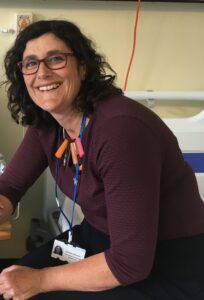Published: 25 February 2021
Adapting frailty service to meet the challenges
Our east Kent Frailty Service has been extended during the pandemic to provide an alternative option to hospital admission and keep patients safe at home.
The service, run by Kent Community Health NHS Foundation Trust, normally provides a comprehensive geriatric assessment (CGA), but has rapidly adapted to providing urgent treatment at home.
During the first wave, it started taking calls from GPs, ambulance services and care homes and assessing patients over the phone or in their homes. As a result, people were able to be treated at home and avoid hospital admission; reducing their risks of catching COVID-19.
All patients have the opportunity to talk about how they would like future care to be offered and this is documented in the new Kent-wide treatment escalation plan. Many patients wish to die peacefully in their own home or in their care home, and the team has worked closely with community teams to allow this to happen.
At the start of the COVID-19 response, some members of the KCHFT’s Frailty Team had to shield, but worked remotely to carry out comprehensive geriatric assessments and treatment escalation plans from their homes.
The team was bolstered from secondments from other services and there was extensive collaboration with referring services, particularly out-of-hours and ambulance services to maximise the potential to see people in their own home or care homes.
More than 1,000 assessments were carried out during the first lockdown from March to June and 94 per cent of patients were able to remain in their own homes.
 KCHFT Consultant Geriatrician Dr Shelagh O’Riordan said: “If communication or cognitive impairment limits the individual or carer’s participation by phone, a face-to-face assessment is arranged. We have set up a new system to make sure the remote assessments and care plans are visible across the IT system.
KCHFT Consultant Geriatrician Dr Shelagh O’Riordan said: “If communication or cognitive impairment limits the individual or carer’s participation by phone, a face-to-face assessment is arranged. We have set up a new system to make sure the remote assessments and care plans are visible across the IT system.
“The feedback has been really positive with most patients welcoming the opportunity to be assessed and treated in their own home with carers and their family involved – and the comfort of knowing their risk of infection had been reduced.”
The service was so successful, especially when supporting care homes, it continued into the second wave.
Print this page
Share on social media
